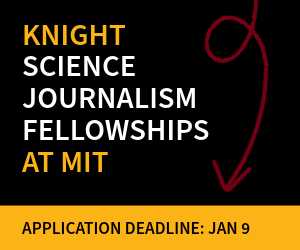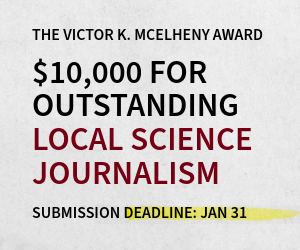This student story was published as part of the 2023 NASW Perlman Virtual Mentoring Program organized by the NASW Education Committee, providing science journalism practice and experience for undergraduate and graduate students.
Story by Sofia Lebron
Mentored and edited by Jan Greene
Researchers have recently found a new method of creating sunscreen using just one ingredient: the body’s own defender, melanin.
More than one out of three Americans experience sunburn throughout their lifetimes, and hundreds of thousands will experience skin cancer due to DNA damage by UV radiation. While sunscreen has proven to be a reliable source of protection, there is now an “ultra-protective” sunscreen on the horizon made from the biological substance of melanin.
Melanin is a biopolymer primarily responsible for three functions: photoprotection, pigmentation, and redox activity. In other words, melanin is the body’s first natural line of defense against the sun’s harmful UV rays, makes up the pigment of our skin, hair, and eyes, and helps with certain bodily activities such as metabolism.
“As we gain a better understanding of the structure of melanin, we should be able to predictably make alternatives that perform better than what is currently available,” says Dr. Philip Lumb, PhD, a lead scientist in the study. There are two different types of melanin: eumelanin and pheomelanin. Eumelanin is the type that absorbs and scatters UV rays, preventing damage, and occurs in the pigment of darker tones such as black and brown. Pheomelanin, however, offers less sun protection and occurs in lighter pigments such as red and yellow hues. Researchers are particularly looking towards eumelanin as it is the type that absorbs UV radiation, whereas pheomelanin does not and instead promotes carcinogenesis.
To act as natural sunscreen, melanin absorbs the UV light hitting the skin, converting its energy into heat. This is important in dissipating the UV energy before it has the opportunity to damage cells or initiate cancer. Melanin is also an environmentally friendly molecule as it is biodegradable, unlike commercial sunscreen.
By harnessing these qualities and magnifying its efficiency into a commercial brand sunscreen, melanin has the potential to be more effective than any other sunscreen sold today. Melanin is capable of many powerful abilities, which is why scientists are attempting to synthetically replicate and enhance these properties using a biosynthetic intermediate known as IQ, or indole-5,6-quinone.
Though IQ was originally found to be unstable on its own, researchers have found a way to stabilize it, allowing further study of the intermediate. With this study, it has been discovered the IQ can successfully mimic the qualities of melanin from its conductivity to its ability to absorb UV rays from the sun and has proven to be very valuable to the study due to its precise structure at the atomic level. Unlike melanin, however, lead scientist Dr. Lumb describes IQ as a green powder in which the research team is attempting to change the absorption properties such that it matches melanin’s black and brown pigment.
By further understanding IQ, not only will the properties of melanin be enhanced, but scientists will also be able to learn more about melanin itself. Melanin’s elusive structure makes it difficult to study and perfectly replicate, but given IQ’s high similarity to melanin, this biosynthetic intermediate may act as a possible solution. Given its molecular precision, IQ is a tailorable molecule that can aid in understanding the emergent properties of melanin.
While a melanin-based sunscreen is still far from the hands of consumers, this research highlights the possibilities of using human biology to create better products for health as well as the environment. More research is being done to understand the behavior of IQ as a structure and its reactions to other molecules, propelling its potential to replicate and enhance the qualities of melanin, and accelerating the journey to ultra-protective sunscreen. “We’ve taken a major step forward in understanding a new mechanism for how melanin can serve as a sunscreen,” says Lumb.
Sofia Lebron is an undergraduate student at Barnard College of Columbia University planning to major in biological sciences. She has always been interested in science and is interested in spreading the ideas being developed in the biomedical field. In her free time she enjoys reading, cooking, and painting.
The NASW Perlman Virtual Mentoring program is named for longtime science writer and past NASW President David Perlman. Dave, who died in 2020 at the age of 101 only three years after his retirement from the San Francisco Chronicle, was a mentor to countless members of the science writing community and always made time for kind and supportive words, especially for early career writers. Contact NASW Education Committee Co-Chairs Czerne Reid and Ashley Yeager and Perlman Program Coordinator Courtney Gorman at mentor@nasw.org. Thank you to the many NASW member volunteers who spearhead our #SciWriStudent programming year after year.
Founded in 1934 with a mission to fight for the free flow of science news, NASW is an organization of ~ 2,600 professional journalists, authors, editors, producers, public information officers, students and people who write and produce material intended to inform the public about science, health, engineering, and technology. To learn more, visit www.nasw.org




